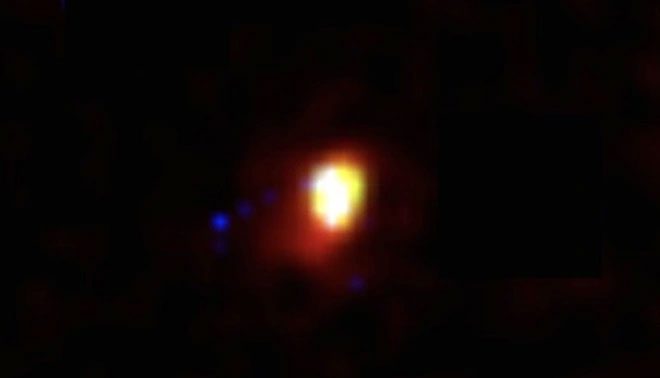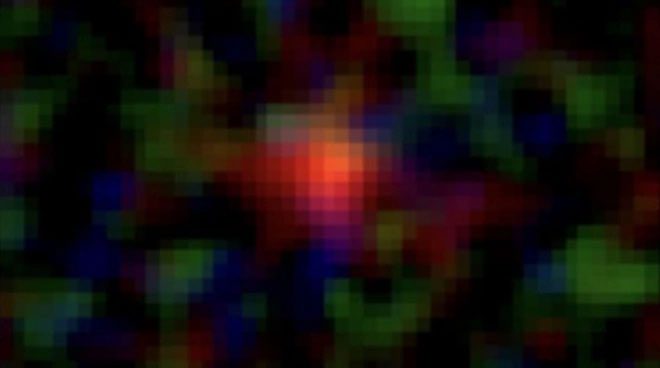Using data from the James Webb Space Telescope, astronomers in Scotland have discovered the oldest galaxy ever found, formed about 235 million years after the Big Bang.
In a paper published in the arXiv journal, astronomers from the University of Edinburgh (Scotland) have identified what is believed to be the oldest galaxy ever observed by humans. It is located 35 billion light-years away and formed approximately 235 million years after the Big Bang.
The galaxy is named CEERS-93316 and has a redshift of 16.7. In astronomy, this term describes an object that emits red light as it moves away from the observer, a consequence of the expanding universe. A higher redshift indicates that the observed object is farther away and formed earlier in the universe.

CEERS-93316 is the oldest galaxy discovered by James Webb to date. (Image: CEERS).
The data used to discover the galaxy was collected from the James Webb Space Telescope, which is operated jointly by NASA, the European Space Agency (ESA), and the Canadian Space Agency (CSA).
The newly discovered galaxy is part of the Cosmic Evolution Early Release Science (CEERS) project, which utilizes James Webb to search for the oldest objects in the universe. Just a week prior, data from the $10 billion telescope helped astronomers from Harvard University discover GLASS-z13, a galaxy formed about 300 million years after the Big Bang.
In addition to CEERS-93316, the research team also observed another ancient galaxy named CEERSJ141946.35+525632.8 (Maisie’s Galaxy), which has a redshift of 14.3 and formed approximately 280 million years after the Big Bang.
“We are using a telescope that is precisely designed for this type of research, and it is fantastic,” said Callum Donnan, an astrophysics PhD student at the University of Edinburgh and co-author of the paper.
James Webb was launched in December 2021 and officially began operations in July of this year after calibration. It is the successor to the Hubble Space Telescope, used to discover stars and ancient galaxies, aiding in the understanding of the universe’s formation history. Modern tools enable James Webb to gather more detailed information than Hubble.

Another observation target is Maisie’s Galaxy, formed 280 million years after the Big Bang. (Image: CEERS).
In the near future, scientists aim to discover objects formed around 100 million years after the Big Bang. As a result, the record for the oldest galaxy found is likely to be broken frequently in the coming times.
According to the BBC, this is still preliminary research, requiring further in-depth analysis to calculate distances. One of these analyses is spectrum analysis, which involves breaking down light to determine color components based on wavelength. This process also reveals the chemical composition of the galaxy.
Theoretically, the first stars in the universe were formed from hydrogen, helium, and lithium created after the explosion. From there, they combined to form heavier atoms, collectively referred to by astronomers as metals.





















































